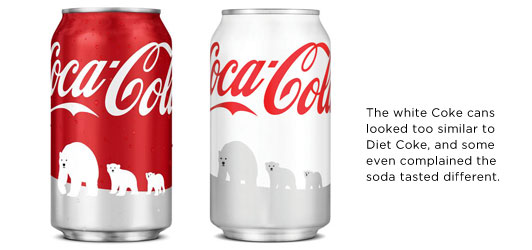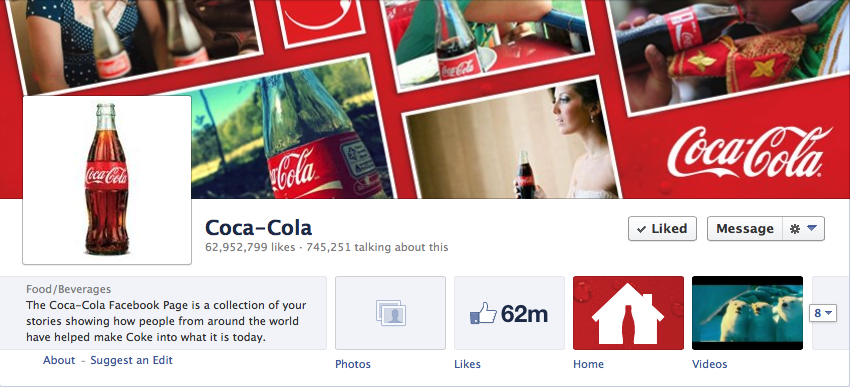In 2006, a man uploaded a video of Coke eruption to Youtube and it went viral. Within a day, 14000 people had watched and shared the video. It was a simple video that showed a bottle of coke erupting after Mentos were dropped into it.
Those were the earliest days of social media; even a giant like Coca Cola struggled within the organisation to react to an event of such magnitude that was outside their control. Their first instinct was to shut it down. But they couldn’t.
Coincidentally, Coca Cola recognised that its brand was ageing. It was exploring ways to reinvent itself to stay relevant among the youths in the age of social media. It saw an opportunity to do so, and never looked back.
Since then, Coca Cola has come a long way in growing its online community. They started their Facebook page, but later shut it down when they discovered another page managed by 2 Coca Cola fans. This other Fan page comprised more members and breathed greater vibrancy. Instead of building a new community from scratch, Coca Cola marketers decided to join the existing community. Instead of wrestling for control of the page, they participated as citizens. They understand the reduced importance of ownership and control, and the increased importance of participation and influence. Coca Cola matured socially.
During a conference “Creating Advocacy In A World Where Mob Rules - The Coca Cola Story”, Coca Cola’s Asia Pacific Regional Director Leonardo O’Grady shared compelling case studies that illustrated 3 lessons that every business should learn in the age of social media.
Be consistent. Your image, your voice, your brand.
“Define what your brand stands for, its core values and tone of voice, and then communicate consistently in those terms “~ Simon Mainwaring

As part of its “Sustainability” theme for Corporate Social Responsibility (CSR), Coca Cola ditched its traditional red colour cans for white colour, partnering with World Wildlife Fund to highlight global warming’s threat to the polar bears’ Arctic habitat in 2011.
Despite meeting with a frosty reception, which arose mainly because consumers confused the white cans with the diet coke’s silver cans, Coca Cola was prepared to change in order to reflect consistency in its CSR campaign with the brand’s strategy, even if it is a tradition that has remained for the past century.
What you can learn
The addition of social media to the marketing toolbox creates the kind of breadth that most businesses struggle to manage well, mainly because of the lack of resources. Therefore, a clear plan laying out what your brand stands for is ever more important to make good use of your existing resources while ensuring consistency in your marketing, so that your consumers understand exactly what you want to convey.
Be daring. Be positive.
Coca Cola saw in customers their innate desire to share. When they met with problems for a marketing brief, they decided to crowdsource for ideas. They ditched the age-old (negative) thinking that doing so reveals weakness in the brand. Instead, they believed in co-creation and promoted co-creation on a new frontier.
Coca Cola invited members of the public to create a film, print, illustration or animation against a particular marketing brief. The result of this? 3600 responses, many of which surpassed even standards produced by their ad agencies.
Everyone in the community was looking at the submissions and commented on them. Some people even improved their submissions based on the feedback. People were talking about Coca Cola even before the marketing campaign was launched. It was one of the first commercial success of its kind, and a huge win for Coca Cola.
What you can learn
Such wide-reaching commercial success might not be for every business, but if you do not take the first step to be daring and be positive about the odds of your success, then you would have denied yourself the kind of success Coca Cola achieved.
Be emotional.
I don’t mean throwing a tantrum or wallowing in self-pity. Now let’s turn to Coca Cola.
Coca Cola understands how to appeal to people, both online and offline. In a world where the Mob Rules, Coca Cola knows shouting at consumers no longer works. In order to drive brand awareness, preference and advocacy in the social media age, they need to stimulate the right conversation, but how?
Coca Cola’s answer is music. Music became a central theme to Coca Cola’s brand. It was no coincidence that FIFA World Cup South Africa 2010 centred on a song, Wavin’ Flag by K’naan. An official remix, entitled “Coca Cola Mix”, integrated Coca Cola’s jingle that was found in previous commercials. Eventually, this version reached the top of several charts in numerous countries such as Germany, Switzerland and Austria. Through the song, Coca Cola somehow drew more attention to its brand than to football. World Cup South Africa 2010 will always be remembered fondly for the Wavin’ Flag.
This was a prime example of successful Emotional Design. How does Emotional Design work? Emotional Design evokes positive emotions in people. The Coca Cola remix removed several darker lyrics of the original song and turned it into something more celebratory, in line with the mood of the campaign. The song connected with people emotionally and made it very memorable. This created an affinity that people felt between themselves and the song, which was very much branded Coca Cola.
What you can learn
So what are the key elements of Emotional Design? The answer is quite simple. You have to evoke positive emotions like joy, pleasure and surprise. But I’m no expert on this. For more information, you can read this article on the basics of Emotional Design. Better still, grab this book and find out everything for yourself.
Do you have anything you want to share about Coca Cola and social media?
Useful resources
- Non Gamstop Casinos
- Non Gamstop Casinos
- Non Gamstop Casinos
- Casino Not On Gamstop
- Non Gamstop Casino
- Casino Sites Not On Gamstop
- UK Casinos Not On Gamstop
- Casinos Not On Gamstop
- Online Casinos UK
- Best Non Gamstop Casinos
- Sites Not On Gamstop
- Non Gamstop Casino UK
- Best Non Gamstop Casinos
- UK Casinos Not On Gamstop
- Non Gamstop Casinos UK
- UK Casino Sites
- Casino En Ligne
- Meilleur Casino En Ligne
- Non Gamstop Casinos UK
- Non Gamstop Casinos



